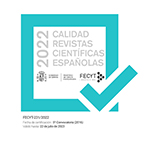Septal nectaries, nectariferous surfaces, colleters and aspects related to pollination in "Canna lineata" Ciciarelli (Cannaceae-Zingiberales).
Abstract
This manuscript encompasses part of a study carried out on the structure and anatomy of flowers in C. lineata. Glandular nectariferous epidermal surfaces, nectar guides of androecium pieces, septal nectaries and colleters of the ovary have been described for the first time. Rows of capitate papillae form nectar guides of labellum whereas convexed and flattened papillae constitute staminodes and petaloid stamen. Prenectar has been tested in papillae of all androecium pieces where nectar secretion starts in phloem of amphicribal vascular bundles and associate parenchyma to be secreted through cuticular pores of epidermis. In septal nectaries, 1-3 layers of parenchyma and numerous cylindrical tricomes narrowed in the apex secrete nectar towards the channels. The fluid is stored in the nectar chamber of the floral tube upon the ovary. Analysis of the chemical composition of nectar allowed us to confirm ornitophyly in C. indica and entomophily in C. lineata. Pollination traits are discussed and it is proposed that other species of Canna with nectariferous flowers of wide and flattened labellum which attract both insects and birds, would conform a mixed floral sindrome. External wall of the ovary is composed by many colleters of the claviform type, it is proposed that they would function as protective structures of ovules and subsequently of the developing seeds. Studies have been carried out with fresh flowers under light microscope and SEM.
Downloads
Article download
License
In order to support the global exchange of knowledge, the journal Botanica Complutensis is allowing unrestricted access to its content as from its publication in this electronic edition, and as such it is an open-access journal. The originals published in this journal are the property of the Complutense University of Madrid and any reproduction thereof in full or in part must cite the source. All content is distributed under a Creative Commons Attribution 4.0 use and distribution licence (CC BY 4.0). This circumstance must be expressly stated in these terms where necessary. You can view the summary and the complete legal text of the licence.







